With ESA’s Biomass in the latter stages of development, two intrepid scientists have been braving the cold in the icy reaches of Antarctica for two months to take measurements from the air and from the ground to help prepare for this new satellite mission.
With their expedition now complete, here’s the report from Jørgen Dall and Anders Kusk.
31 January 2024
Another day, where we didn’t manage to get Polaris airborne. No, not this Polaris – the radar of course!
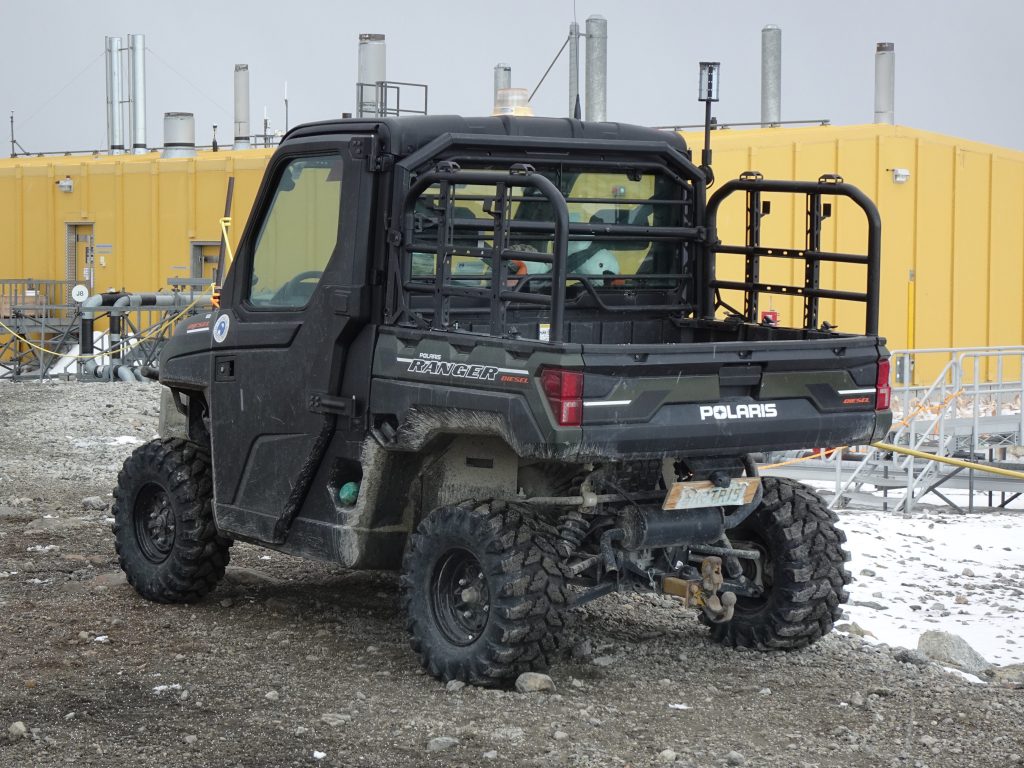
The other Polaris. (DTU)
But, in fact, the radar has been grounded for six days, mostly due to bad weather and poor visibility, and no-ops, but also because the latest three ICECAP flights have been used to deploy buoys over the ocean. Meanwhile, we have been in the science building (the yellow building in the picture above) processing and analysing data from the previous flights.
1 February 2024
Finally, we had an additional flight with the Polaris radar. Shortly after take-off we passed the Casey Station and Shirley Island.
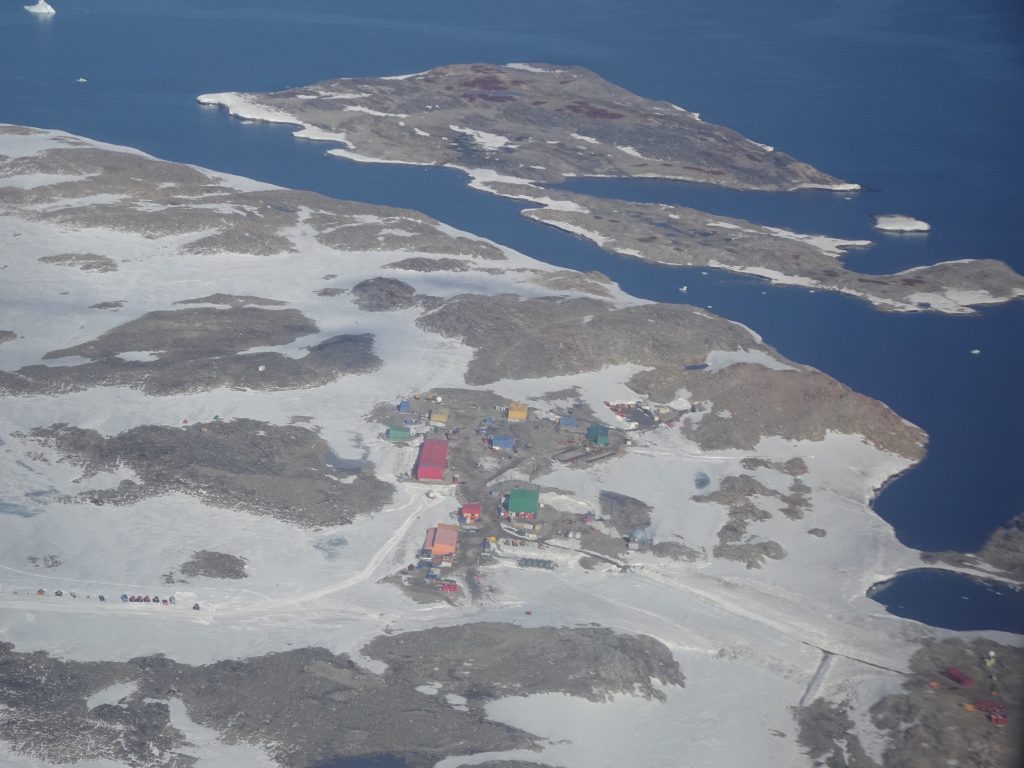
Casey Station and Shirley Island. (DTU)
In our synthetic aperture radar image from 7 January, a bridge of sea ice still connected the island to the Bailey peninsula, but this had now disappeared.
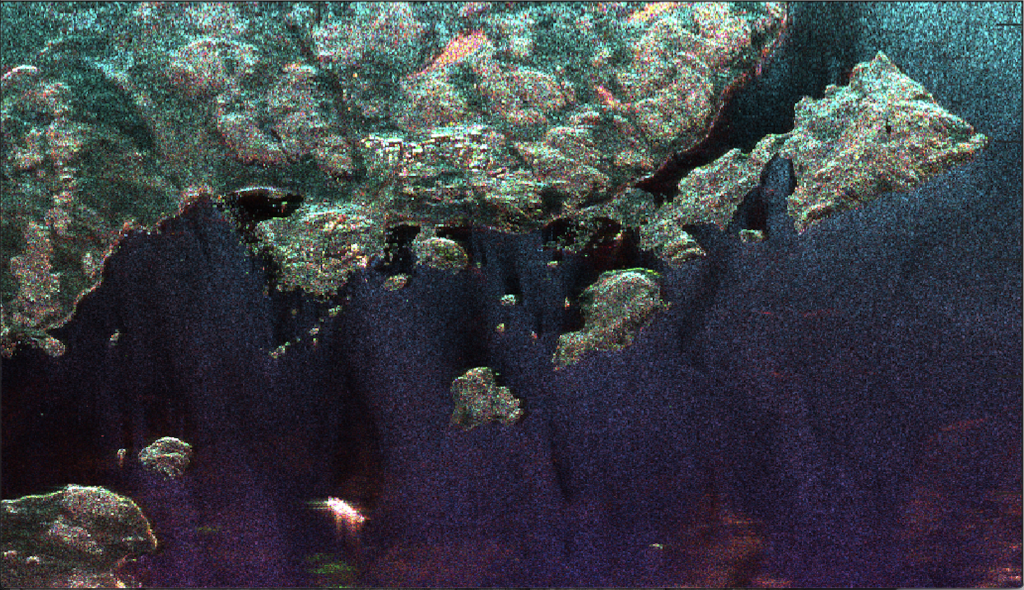
Bridge of sea ice on 7 January. (DTU)
It was not very windy when we left Casey, but the waves and the snow blowing off the icebergs, when we flew transit to Shackleton, showed that the wind had picked up.
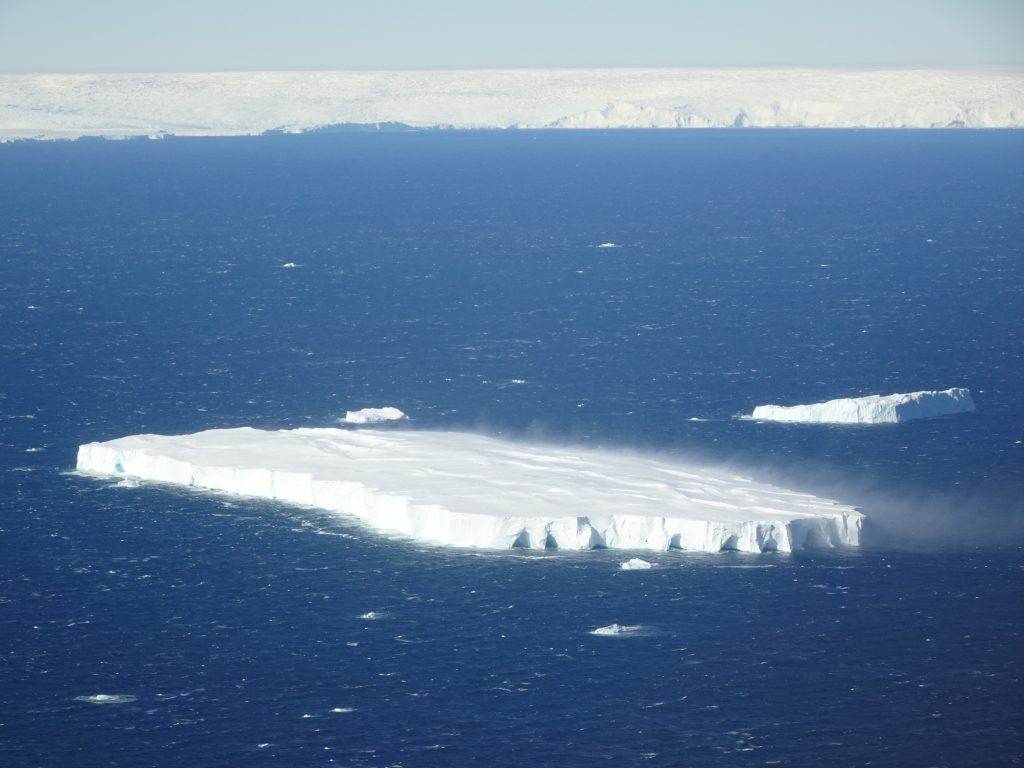
Snow blowing off an iceberg. (DTU)
Today’s flight was a combination of tomographic synthetic aperture radar mapping and ice sounding over the Shackleton ice shelf and buoy deployment east of Shackleton.
We completed another five radar racetracks (in addition to the ten acquired on 11 January) over the ice shelf to ensure even less separation between the flight tracks, thereby increasing the unambiguous depths that can be measured.
This is important to prevent the strong surface signal from obscuring the weak basal signal because of aliasing. The pilots, Cory and Bailey, are now experienced in using our EMAP display to ensure precise flight tracks. Having completed the racetracks, we configured the Polaris radar for ice sounding, and over the ice shelf closer to the ocean we observed interesting ice signatures.
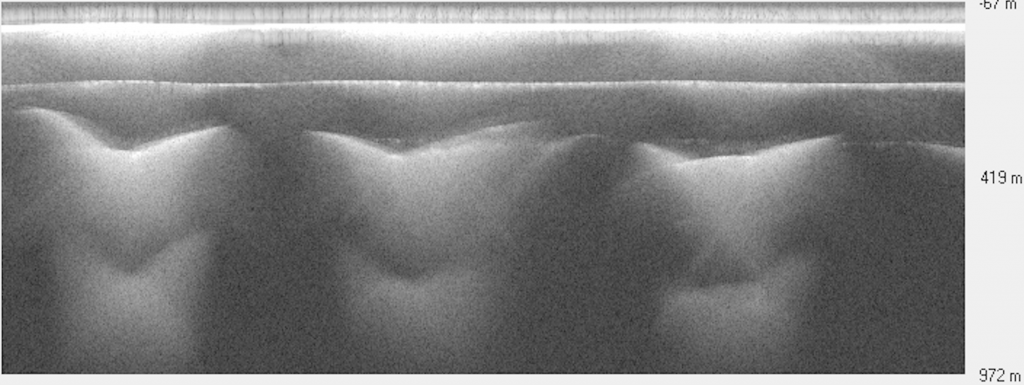
Sounder profile. (DTU)
Lenneke deployed 15 buoys at pre-selected positions. After hitting the ocean surface, part of the buoys descended and the measured water depth, temperature, and (for a few of the buoys) conductivity was transmitted back to Briar in the aircraft.
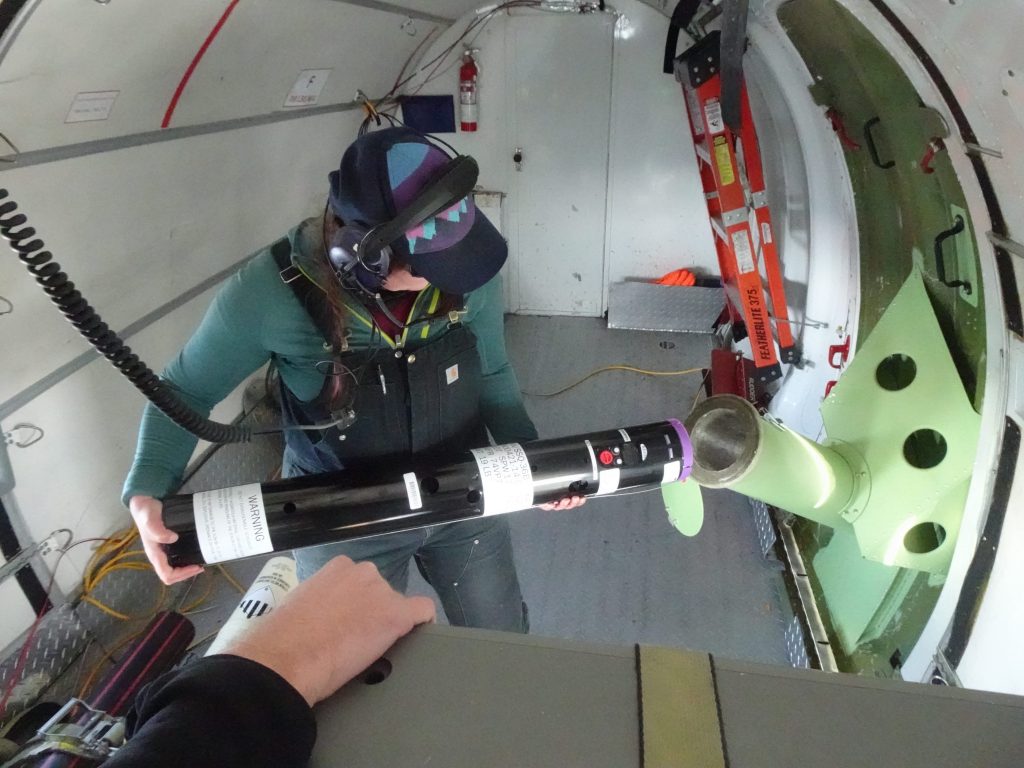
Deploying a buoy. (DTU)
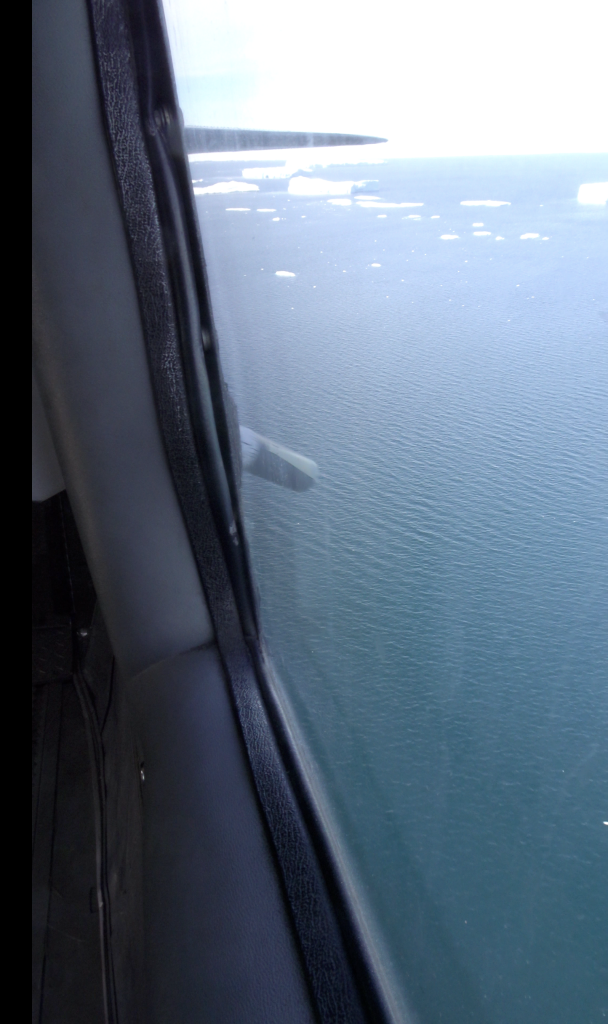
Buoy exiting the aircraft. (DTU)
Before heading back to Casey, we refuelled at Bunger Hills. Another Basler and a Twin Otter aircraft were there, too, bringing people and equipment back to Casey at the end of the summer season.
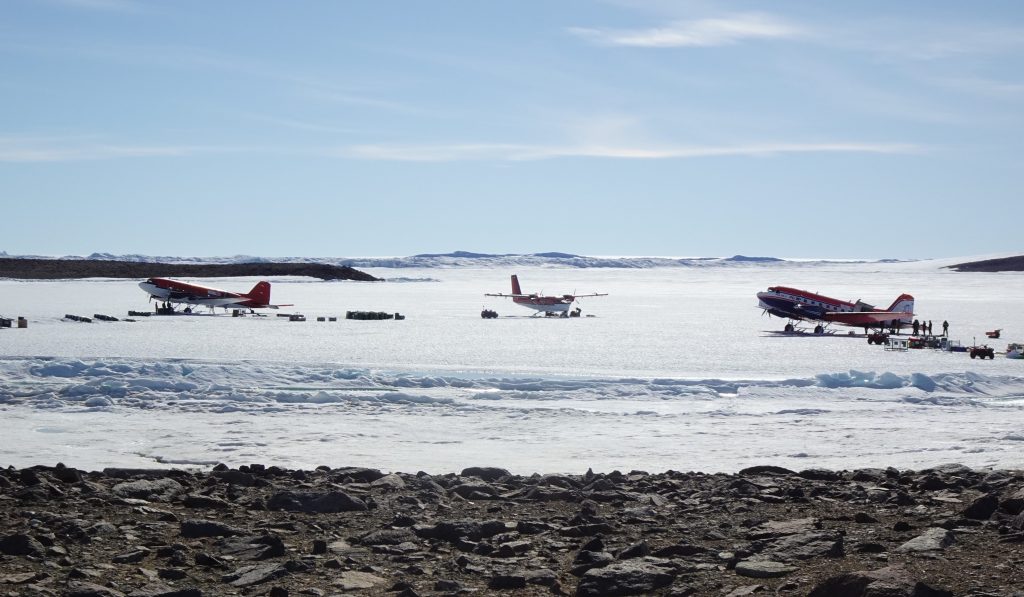
Aircraft at Bunger Hill. (DTU)
Shortly be before reaching Casey we passed the Underwood Glacier. The glacier is well suited for testing our new clutter-suppression radar prefilter, as the crevasses do not only reflect the radar signal from nadir.
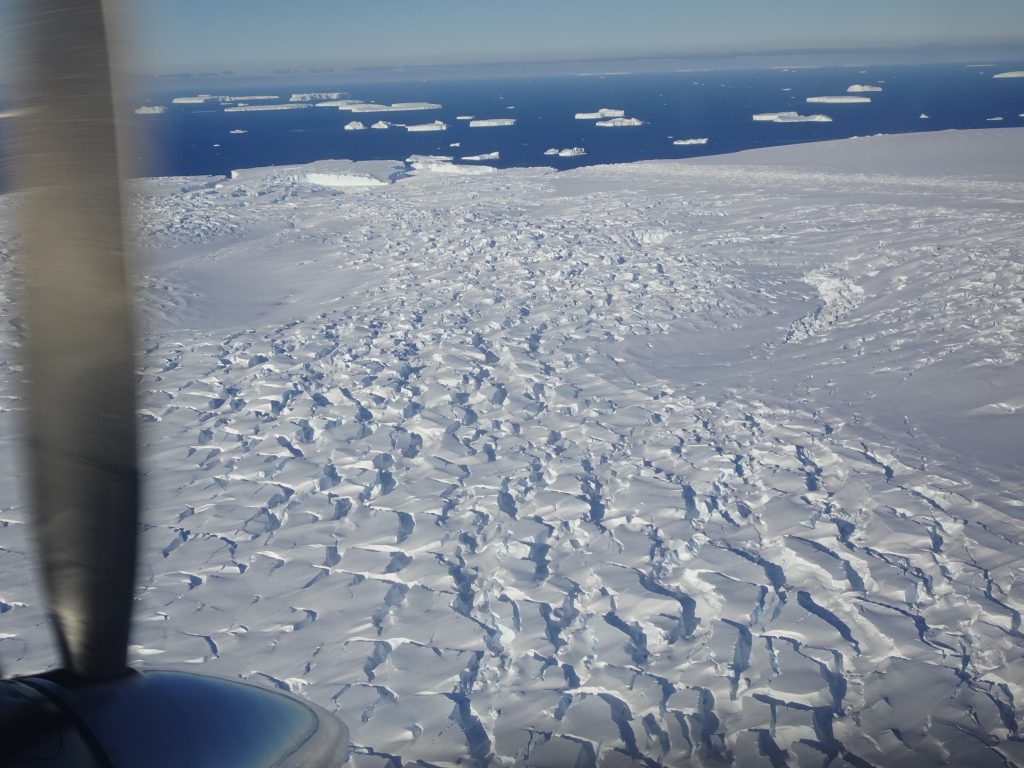
Underwood Glacier. (DTU)
This was the 13th and last ICECAP flight in the 2023–24 season. Thirteen flights in one season is an excellent achievement, and since we have apparently got good data, it has been a very successful campaign.
2 February 2024
The season is ending, and the Basler aircraft is needed to transport people and equipment back to Casey. Today we dismounted the Polaris radar and the other ICECAP sensors. The ordinary cargo door is back in the Basler, and the smaller radar antenna is in the open wooden box.
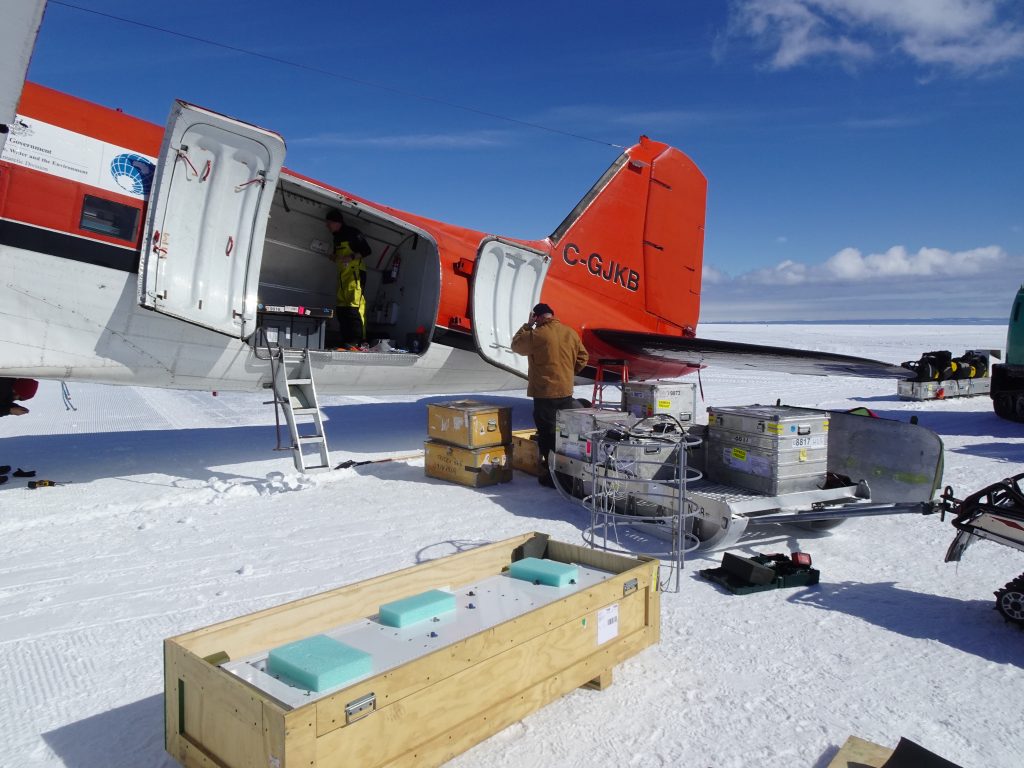
Packing up. (DTU)
With the radar already dismounted and packed, we were disappointed that our flight from Casey to Hobart on 5 February was cancelled. The temperature of the runway at Wilkins must be below –5° at a depth of 1 m, and the weather forecast does not look good. Our flight is now scheduled one day later.
5 February 2024
After packing, checking-in our baggage and cleaning our rooms, we went for a leisurely hike to the western tip of the Bailey Peninsula. It is just a few kilometres from Casey, but it is outside the station limits and calls for certain safety precautions such as a radio, a GPS, and a survival field pack.
From the peninsula we could see lots of breeding Adelie pinguins on Shirley Island. The dark grey youngsters are already large and will soon be ready for the long and harsh Antarctic winter.
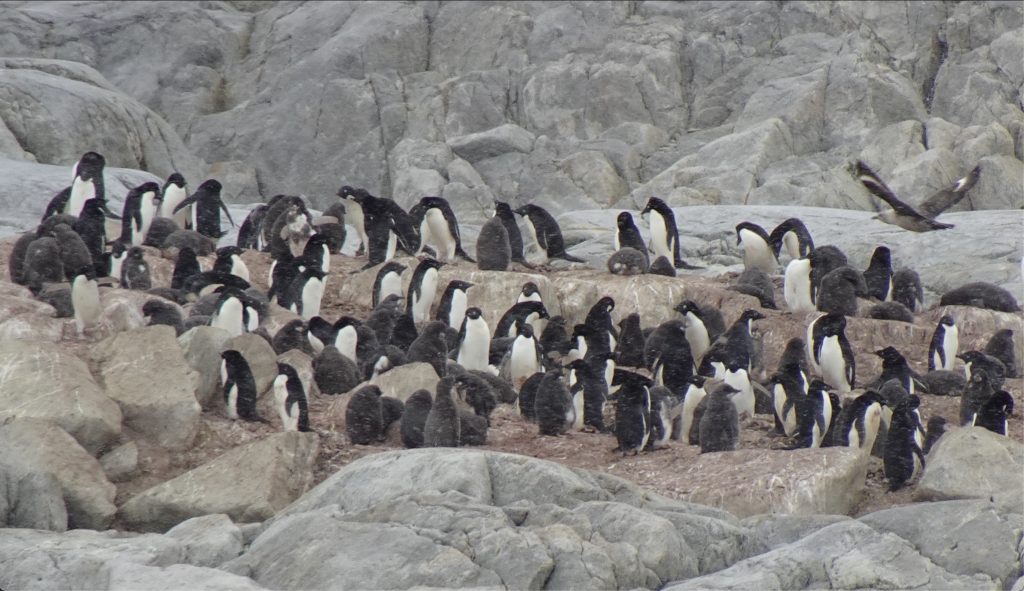
Adelie penguins. (DTU)
6 February 2024
Today, we got up at 03:00 and happy to see that our flight to Hobart was still in the plan, but 03:51, i.e. 9 minutes before we were supposed to be ready to leave Casey, we were informed that the flight was cancelled. Hurry up and wait! Fortunately, again just a one-day delay.
7 February 2024
Today’s flight from Casey was also cancelled. Disappointing, but in Antarctica it does not come as a surprise. In addition to the temperature of the runway, other weather-related factors can be prohibitive, e.g. ice and snow drifts. This time it is a two-day delay, and we have to change our flight from Hobart to Copenhagen.
8 February 2024
Tomorrow’s flight from Casey is also cancelled. This is the fourth cancellation! The next attempt is not until the 13 February, so the total delay will be at least 8 days. Once again we must change our flight from Hobart to Copenhagen.
9–11 February 2024
Nothing is bad without being good for something. Due to the many delays, we could join the summer swim. The weather was cold and windy, but we made it, and it was a great experience.
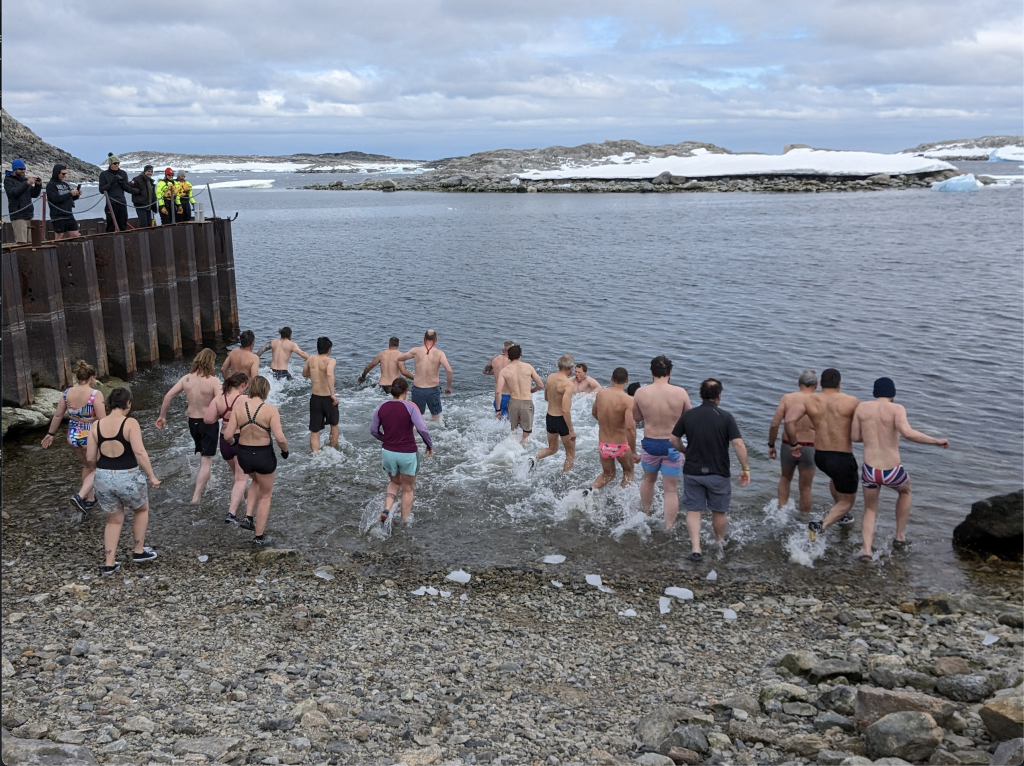
Summer swim. (DTU)
12 February
Finally, good news: the weather forecast looks good, and we have checked-in our baggage for the second time. We really hope to head off to Hobart tomorrow.
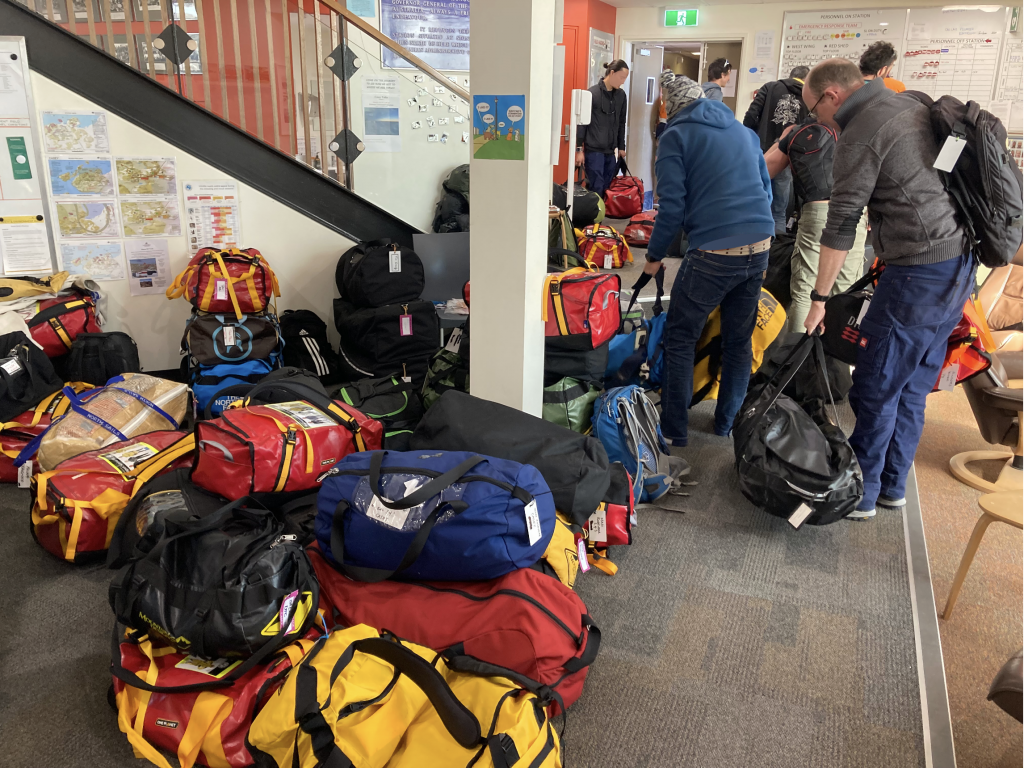
Checking baggage. (DTU)
13 February
For the second time we got up at 03:00 to fly to Hobart, and this time we didn’t do it in vain. About 30 passengers were transported by Haggs to the Terra bus, about 1 km from Casey.
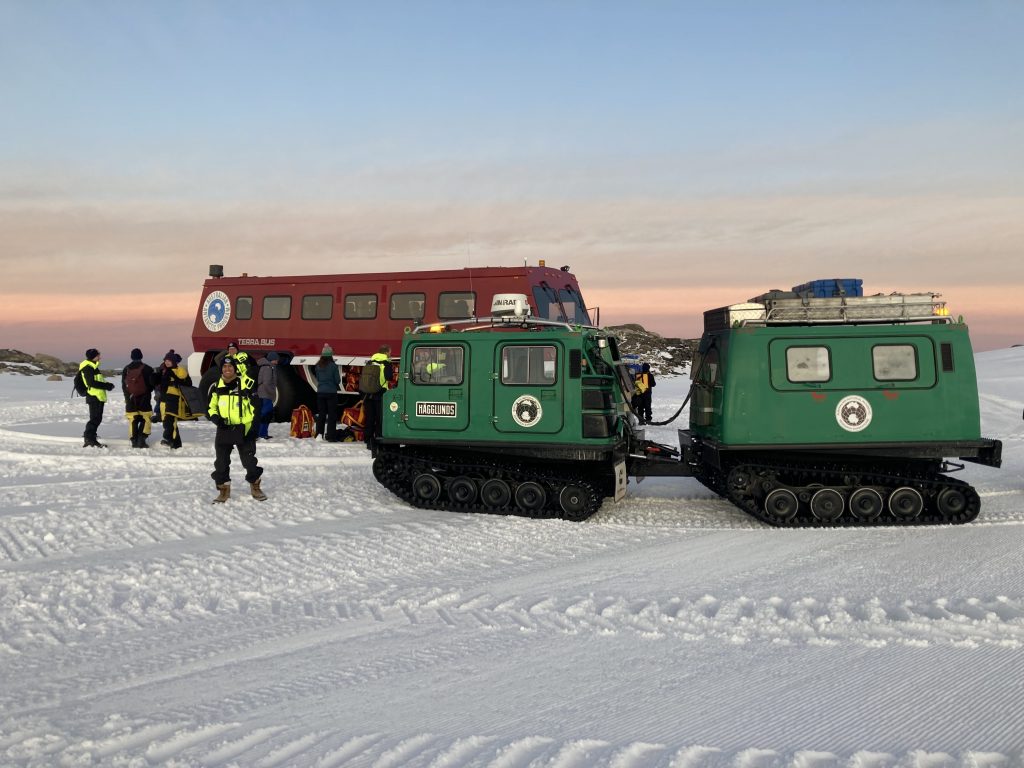
Transport to the bus. (DTU)
We arrived shortly before sunrise, and the path to the Wilkins aerodrome was nicely flanked by the Australian and French flags in honour of people who left Concordia via Casey.
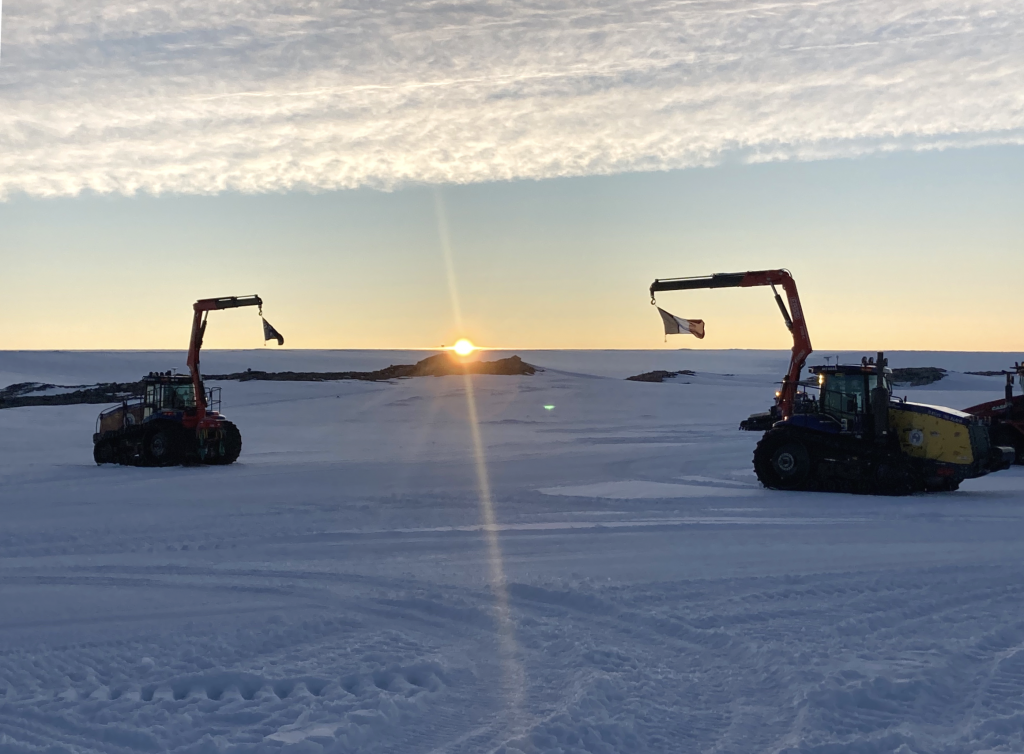
Flying the French and Australian flags. (DTU)
Three hours later we arrived at Wilkins aerodrome where we waited another three hours for the Airbus to come from Hobart.
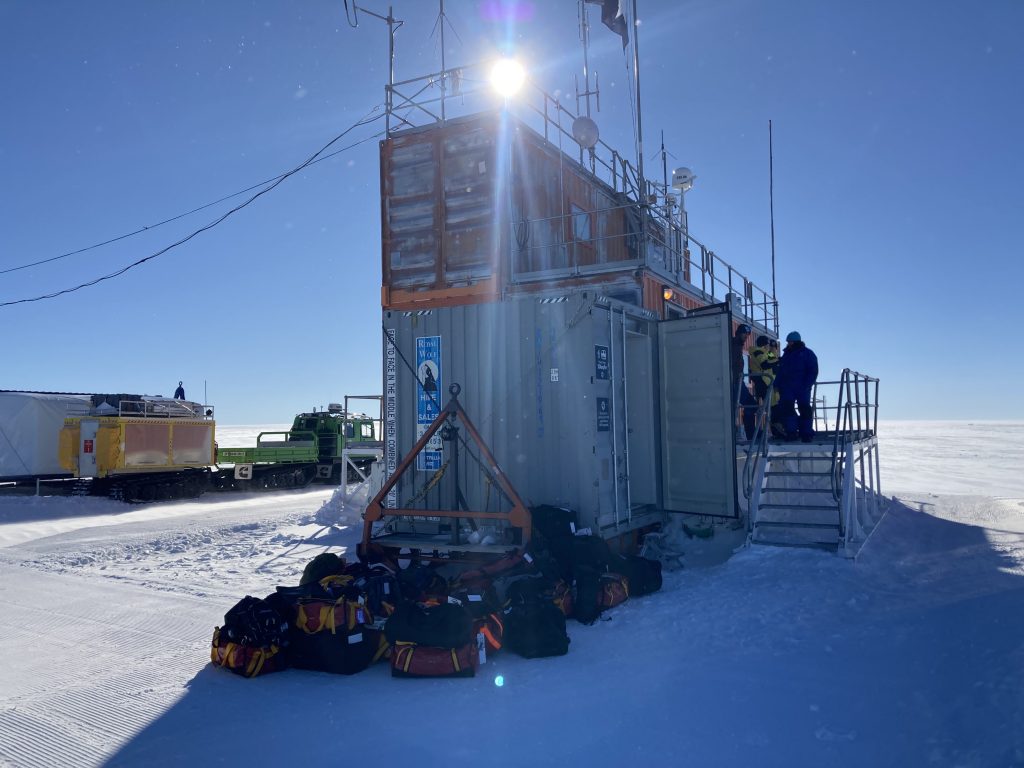
Wilkins aerodrome. (DTU)
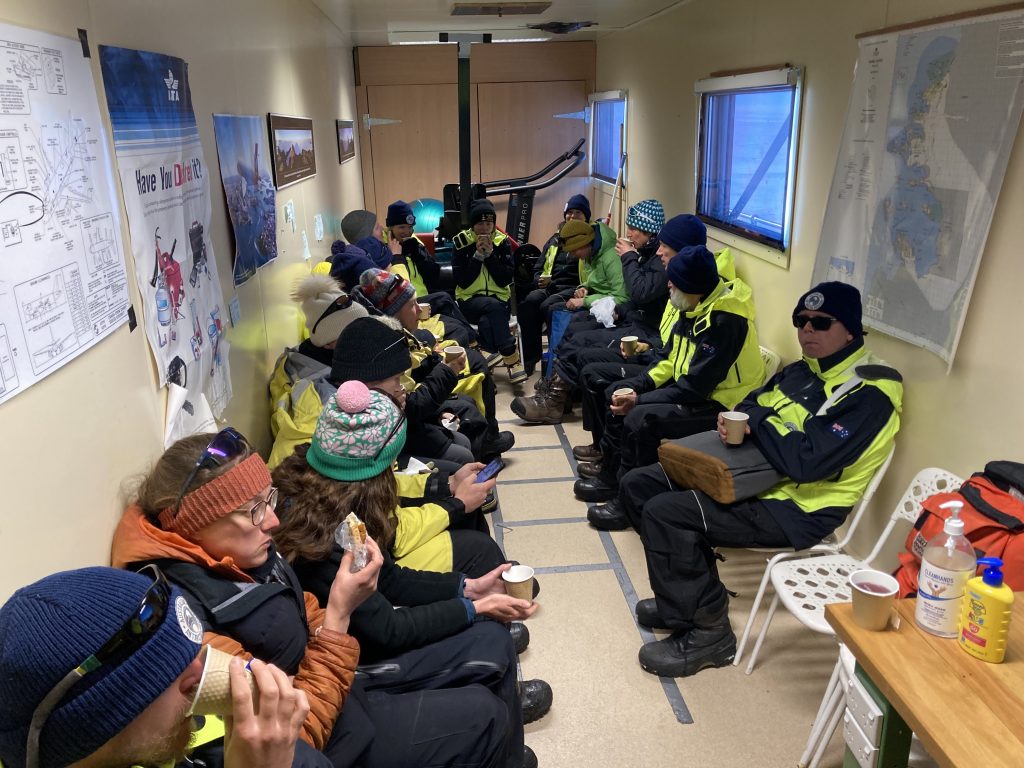
Waiting. (DTU)
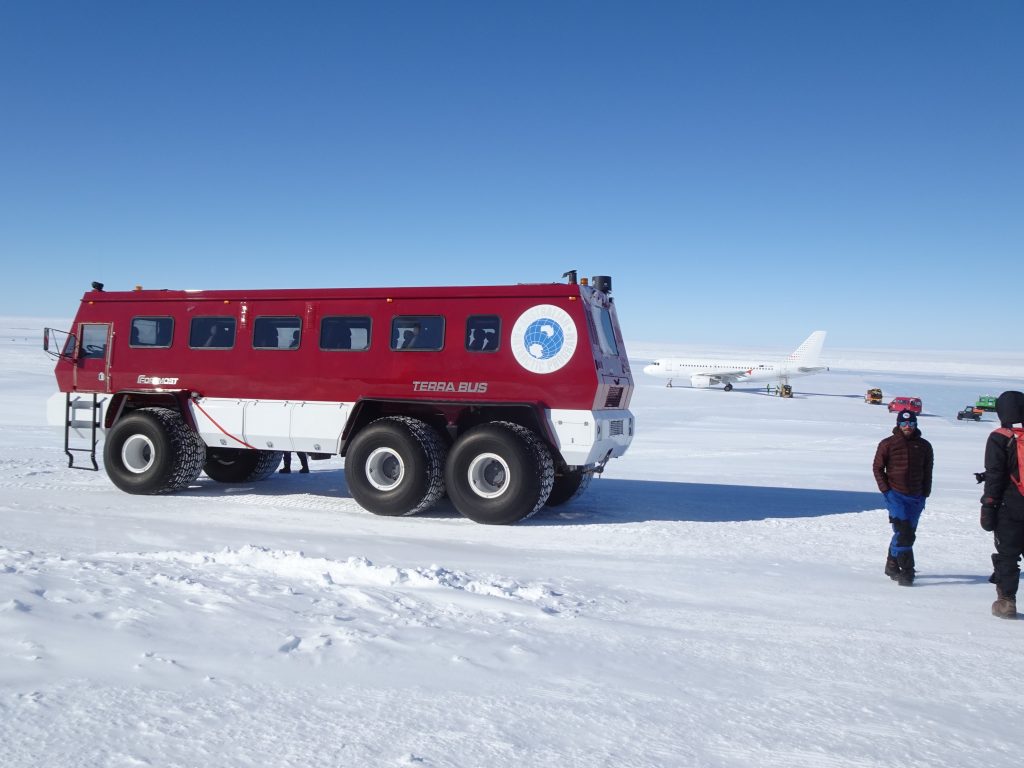
The bus. (DTU)
This was the end of a very exciting and successful campaign in Antarctica.
We thank ESA for support and the ICECAP team and the aircraft crew from KBA for sharing the season with us.
Before the original departure day, we had a group photo taken at the ice sculpture created by Brendan, the kitchen chef.
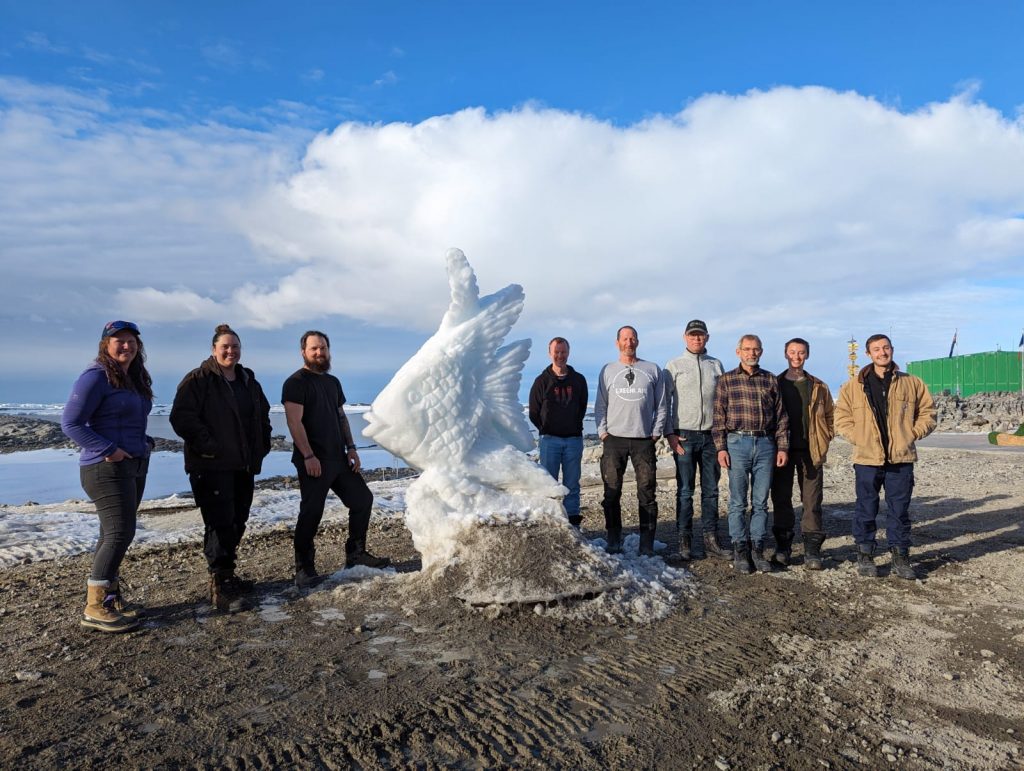
Group photo. (DTU)
From left to right: Lenneke (AAD), Bailey (KBA), David (KBA), Jason (AAD), Cory (KBA), Anders (DTU), Jørgen (DTU), Briar (Scripps), Tyler (Scripps).
Post from: Jørgen Dall and Anders Kusk. (DTU)








Discussion: no comments